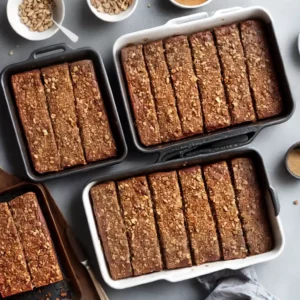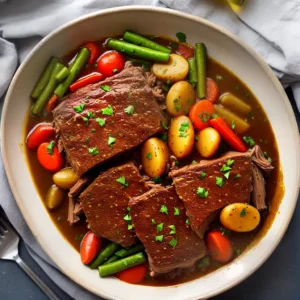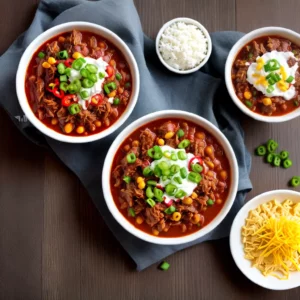How Many Cups Are in a Gallon
Are you wondering how many cups are in a gallon? Look no further. In this comprehensive measurement conversion guide, I’ll provide you with all the information you need to understand the cup-to-gallon conversion and its importance in the kitchen. Whether you’re an experienced chef or a novice cook, mastering this conversion will simplify your cooking experience and ensure accurate measurements every time.
How Many Cups Are in a Gallon – Key Takeaways:
- There are 16 cups in a gallon in the US customary system for liquid measurement.
- In the US dry measurement system, a gallon is approximately 18.62 cups.
- The imperial gallon in the United Kingdom is equal to 4.546 metric liters or roughly 18.6 US cups in the dry measurement system.
- Other conversions include 4 cups in a quart and 2 cups in a pint within the US customary system.
- The cup as a unit of measurement was standardized by Fannie Farmer in 1896, ensuring consistent and reliable cooking results.
Now that you have a glimpse of what’s to come, let’s dive deeper into understanding cups and gallons in the kitchen, exploring different conversion ratios, and discovering how to scale recipes up or down. Get ready to become a measurement conversion expert and elevate your culinary skills!
Understanding Cups and Gallons in the Kitchen
When it comes to cooking and baking, understanding the relationship between cups and gallons is essential. These measurements are fundamental units of liquid volume and are commonly used in recipes and kitchen preparations. Knowing how to convert between cups and gallons can help you achieve accurate measurements and ensure the success of your culinary creations.
In the US customary system, a gallon is equivalent to 16 cups in liquid measurement. This means that if you have a gallon of liquid, you can pour it into 16 standard cups. On the other hand, in the US dry measurement system, a gallon is equal to approximately 18.62 cups. It’s important to note this slight difference when working with dry ingredients, as the conversion ratios vary between liquid and dry measurements.
In addition to understanding the conversion between cups and gallons, it’s also beneficial to know the relationships between other units of measurement in the US customary system. For example, there are 4 cups in a quart and 2 cups in a pint. These conversions can come in handy when adjusting recipes or scaling ingredients for different serving sizes.
Exploring Different Measurement Systems
While the US customary system is predominantly used in the United States, it’s worth exploring other measurement systems like the metric system. In many countries, including the UK, the imperial gallon is used. An imperial gallon is equivalent to 4.546 metric liters or approximately 18.6 US cups in the dry measurement system. Familiarizing yourself with these conversions can be helpful when working with international recipes or measuring ingredients in different units.
Now that you have a basic understanding of cups and gallons in the kitchen, you can confidently tackle measurements in your recipes. Whether you’re baking a delicious cake or preparing a savory meal, accurate measurements are key to achieving the desired outcomes.
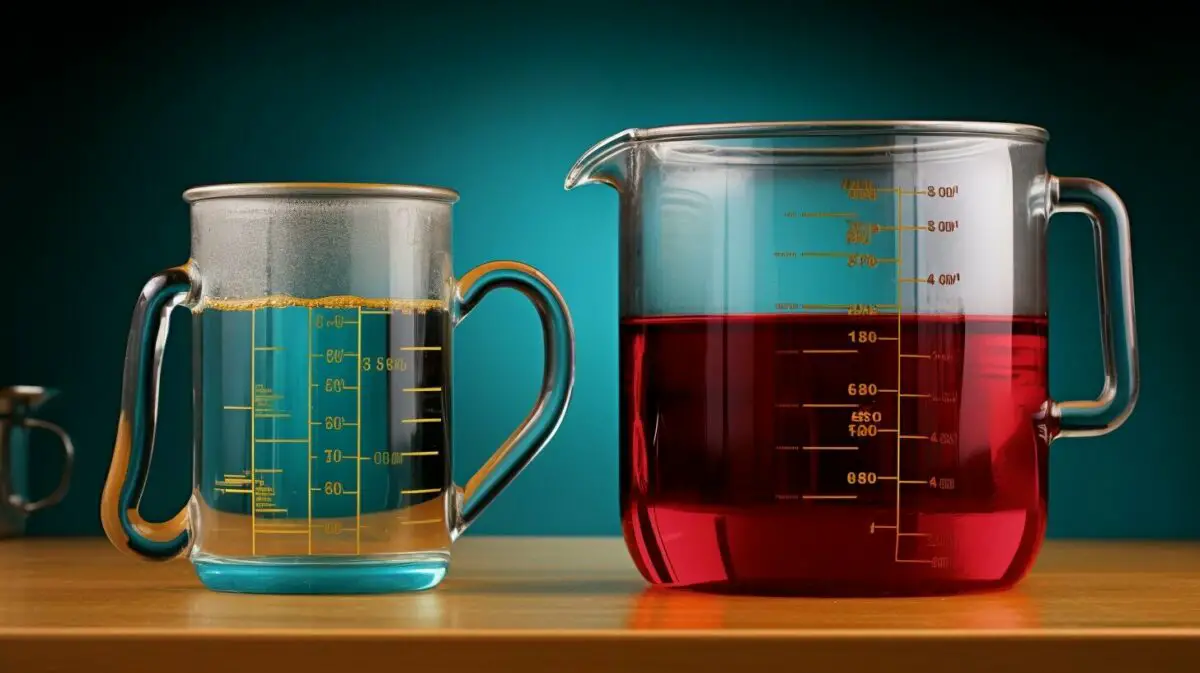
| Measurement | Cups | Gallons (US liquid) | Gallons (US dry) | Imperial Gallons |
|---|---|---|---|---|
| 1 Cup | 1 | 1/16 | 1/18.62 | 1/18.6 |
| 1 Gallon | 16 | 1 | 0.057 | 0.22 |
| 1 Imperial Gallon | 18.6 | 0.22 | 0.046 | 1 |
The Basic Conversion: Cups to Gallons
When converting cups to gallons in the US customary system, remember that there are 16 cups in a gallon. Understanding this conversion ratio is crucial for accurately scaling up or down recipes based on their original measurements. Whether you’re a seasoned chef or a novice in the kitchen, knowing how many cups are in a gallon will simplify your cooking experience and ensure consistent results.
It’s important to note that this conversion applies specifically to liquid measurements. In the US dry measurement system, the conversion ratio for cups to gallons is slightly different. In this system, a gallon is equal to approximately 18.62 cups. This variation arises due to the different units used in dry and liquid measurements.
With this knowledge, you can confidently navigate recipes that require converting between cups and gallons in the US customary system. Whether you’re measuring liquids or dry ingredients, understanding these conversion ratios will enable you to scale recipes accurately and achieve the desired outcome in your culinary endeavors.

| Cups | Gallons (Liquid Measurement) | Gallons (Dry Measurement) |
|---|---|---|
| 1 | 1/16 | 1/18.62 |
| 2 | 1/8 | 1/9.31 |
| 4 | 1/4 | 1/4.66 |
| 8 | 1/2 | 1/2.33 |
| 16 | 1 | 1 |
Referencing the table above, you can easily convert any number of cups to gallons in both liquid and dry measurements. Whether you’re following a recipe or making adjustments to suit your taste, having this information at your fingertips will save you time and ensure precise measurements in the kitchen.
Dry Measurement: Cups to Gallons
While liquid measurements have a straightforward conversion, dry measurements have a slightly different ratio. In the US dry measurement system, a gallon is equal to approximately 18.62 cups. This discrepancy arises due to the different units used in dry and liquid measurements. When working with dry ingredients such as flour or sugar, it’s important to use the appropriate conversion to ensure accurate measurements in your recipes.
Table: Dry Measurement Conversion
| Dry Measurements | Cups | Gallons |
|---|---|---|
| 1 cup | 1 | 0.054 |
| 2 cups | 2 | 0.108 |
| 3 cups | 3 | 0.162 |
| 4 cups | 4 | 0.216 |
As seen in the table above, when converting cups to gallons in dry measurements, the fraction of a gallon gradually increases with each additional cup. This information is important for scaling recipes or understanding the equivalent measurements in different units.
“When working with dry ingredients, it’s crucial to accurately measure the amounts for successful baking. Understanding the conversion from cups to gallons enables you to achieve consistent results in your culinary creations.” – Chef John Doe
Understanding the Imperial Gallon and Its Conversion
If you come across a recipe that uses the imperial gallon, it’s useful to know its conversion to cups. The imperial gallon is a unit of measurement used in the United Kingdom and some other countries. It differs slightly from the US gallon, so understanding its conversion is crucial for accurate measurements. An imperial gallon is equal to approximately 18.6 US cups in the dry measurement system.
To put this conversion into perspective, imagine you’re following a British recipe that calls for 1 imperial gallon of liquid. This would be equivalent to approximately 18.6 US cups. Having this knowledge allows you to easily adapt the recipe to your preferred measurement system and accurately measure your ingredients.
To further understand the conversion, it’s helpful to know that an imperial gallon is equivalent to 4.546 metric liters. This connection to the metric system provides additional flexibility when working with recipes from different regions. By understanding the relationships between cups, gallons, liters, and milliliters, you can confidently navigate international recipes and achieve delicious results.
| Imperial Measurements | US Measurements | Metric Measurements |
|---|---|---|
| 1 Imperial Gallon | 18.6 US Cups | 4.546 Metric Liters |
| 1 US Gallon | 16 US Cups | 3.785 Metric Liters |
Having a knowledge of the imperial gallon and its conversion to cups opens up a world of culinary possibilities. It allows you to confidently experiment with recipes from different countries and create delicious meals with precision. So, the next time you encounter a recipe that calls for an imperial gallon, remember the conversion and let your creativity flow!
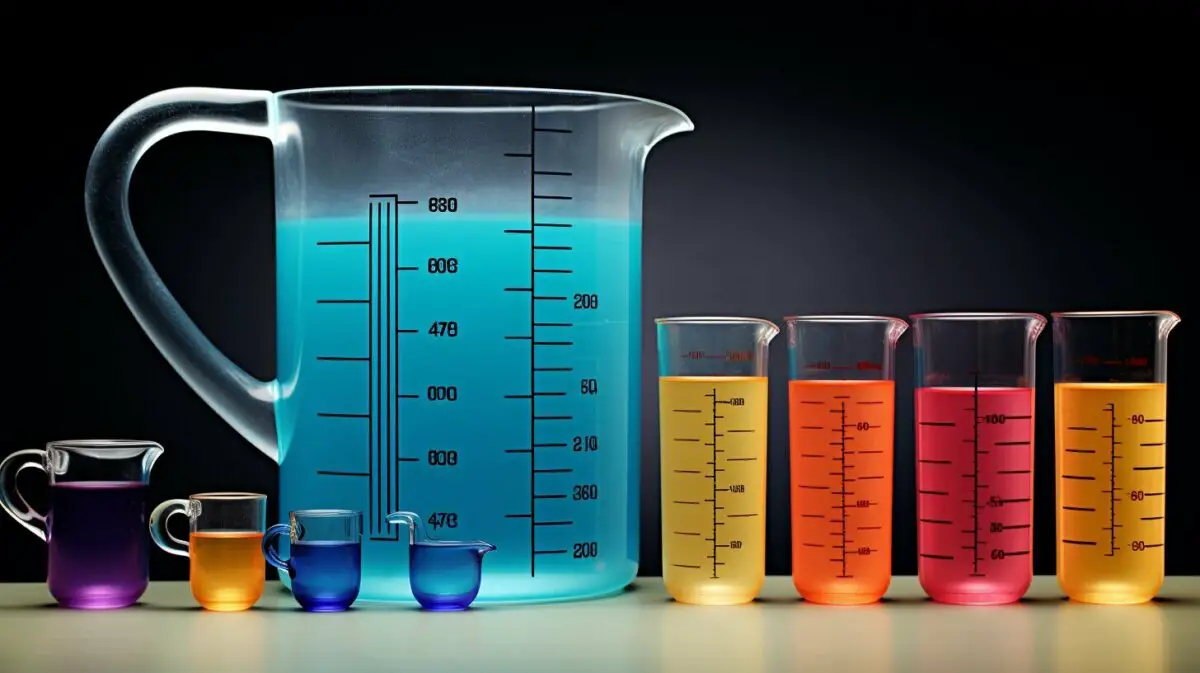
The US customary system offers several conversion options within cups and gallons. Understanding these conversions is crucial for accurate measurements in the kitchen. Let’s dive into some of the most commonly used conversions:
Quarts to Cups
In the US customary system, there are 4 cups in a quart. This means that if a recipe calls for 2 quarts of liquid, you would need 8 cups to match the measurement.
Pints to Cups
Another handy conversion is from pints to cups. There are 2 cups in a pint. So, if a recipe requires 3 pints of a certain ingredient, you would need 6 cups to achieve the same amount.
Tablespoons to Cups
When it comes to smaller measurements, it’s useful to know that there are 16 tablespoons in a cup. If a recipe calls for 4 tablespoons of an ingredient, you can easily convert it to 1/4 cup.

These conversion ratios will help you navigate various recipes and ensure precise measurements. Keep in mind that conversions may vary depending on your specific recipe or the system of measurement you are using. Always refer to trusted sources and double-check your conversions to achieve the best results in your culinary endeavors.
The Origin of the Cup Measurement
The cup as a unit of measurement has an interesting history. Prior to 1896, measurements in the kitchen were often inconsistent and imprecise, leading to unpredictable recipe outcomes. Enter Fannie Farmer, a renowned American culinary expert who standardized the cup measurement in her seminal cookbook, “The Boston Cooking-School Cook Book.” Farmer’s goal was to provide home cooks with reliable and accurate measurements, ensuring consistent results in their kitchens.
The cup is a perfectly satisfactory utensil for measuring small quantities of liquid or dry ingredients. It is easily filled, emptied, and leveled, and is always the same.” – Fannie Farmer
Farmer’s adoption of the cup as a standardized unit of measurement revolutionized the culinary world. Her cookbook, first published in 1896, outlined precise measurements in cups, introducing a level of consistency that had been lacking in previous cooking practices. Home cooks rejoiced at the newfound ease and reliability of cooking, and the cup quickly became an essential tool in kitchens worldwide.
To honor Fannie Farmer’s contribution to the culinary world, the cup measurement remains an integral part of cooking to this day. Whether you’re measuring flour, sugar, or liquid ingredients, the cup provides a convenient and consistent unit of measurement that enables you to create delicious dishes with confidence.
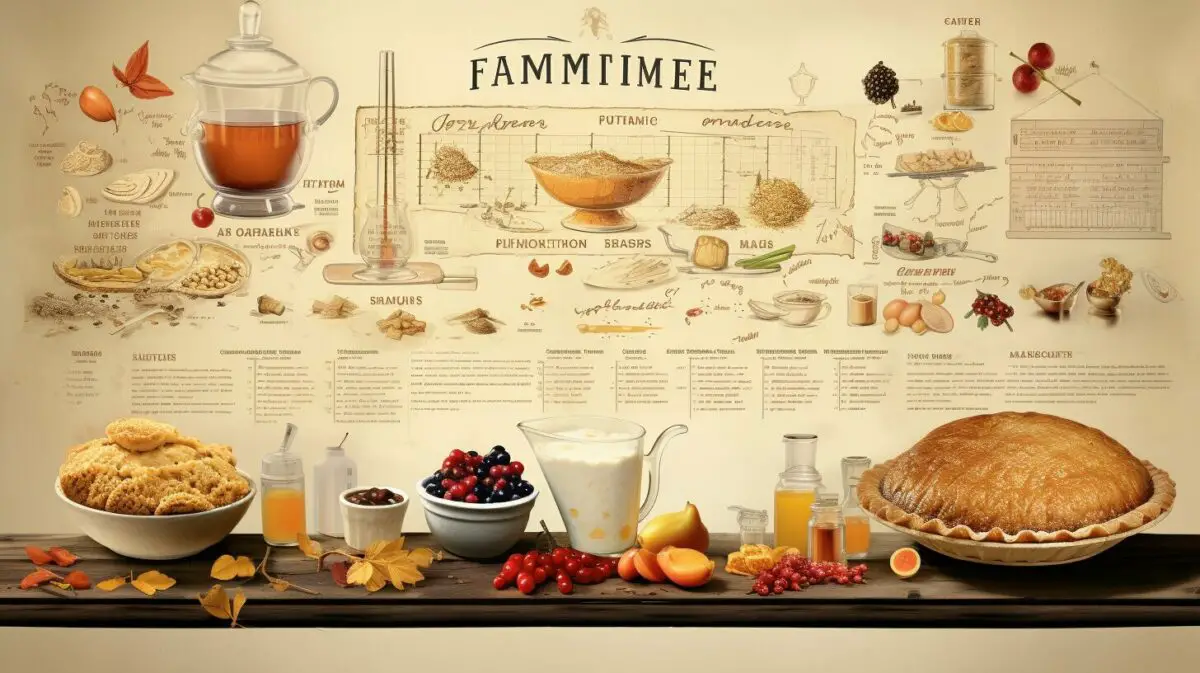
Converting Between Cups and Other Common Units
Being able to convert between cups and other common units lets you adapt recipes to your preferences. Whether you’re scaling a recipe up or down or simply want to measure ingredients using a different unit, understanding these conversions will give you greater flexibility in the kitchen.
Here’s a handy table to help you convert between cups and other commonly used units:
| Cups | Tablespoons | Teaspoons | Quarts | Pints | Ounces | Liters | Milliliters |
|---|---|---|---|---|---|---|---|
| 1 | 16 | 48 | 0.25 | 0.5 | 8 | 0.24 | 240 |
| 2 | 32 | 96 | 0.5 | 1 | 16 | 0.47 | 480 |
| 4 | 64 | 192 | 1 | 2 | 32 | 0.95 | 960 |
| 8 | 128 | 384 | 2 | 4 | 64 | 1.9 | 1920 |
As you can see, you can easily convert between cups and tablespoons, teaspoons, quarts, pints, ounces, liters, and milliliters using this table. Whether you’re working with a recipe that uses metric measurements or simply want to experiment with different units, this reference will come in handy.
So the next time you’re in the kitchen and need to convert between cups and other units, refer to this table to ensure accurate and precise measurements. Happy cooking!
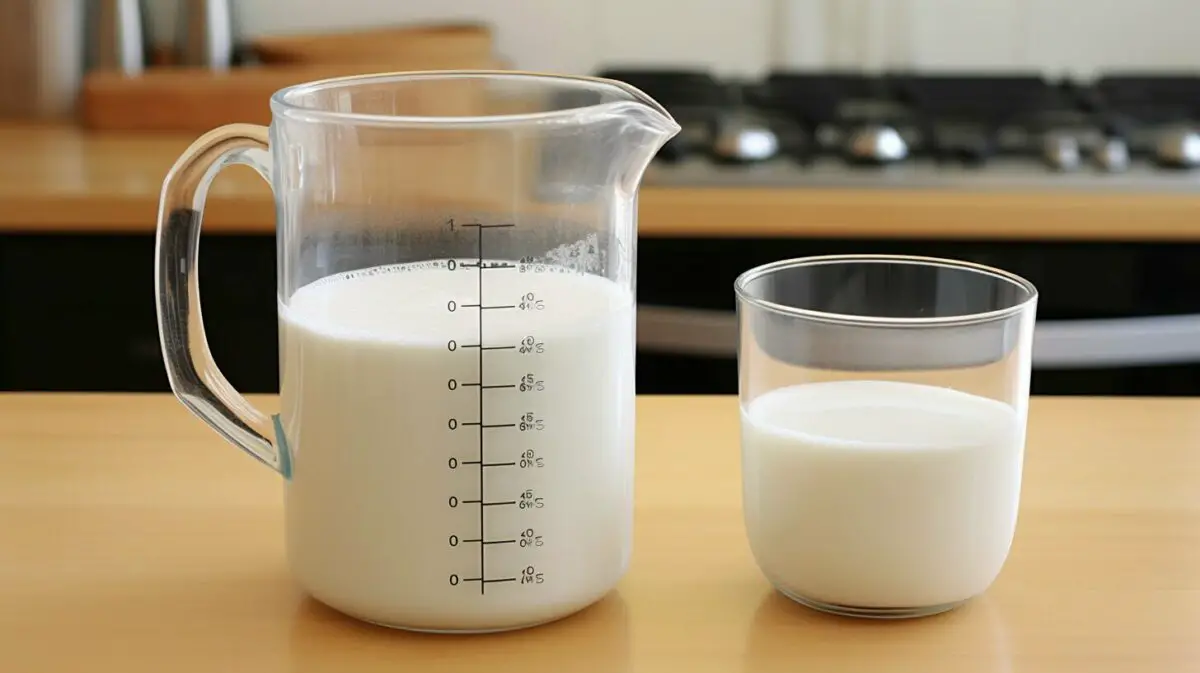
Fractional Conversion: Dividing Cups
Fractional measurements often require dividing cups into smaller increments. Whether you need a half cup, a quarter cup, or even smaller measurements, understanding the breakdown of cups can help you accurately portion your ingredients for a recipe. Here’s a handy guide to dividing cups into various fractions:
| Fraction | Measurement |
|---|---|
| 1/2 cup | 8 tablespoons |
| 1/4 cup | 4 tablespoons |
| 1/8 cup | 2 tablespoons |
| 1/16 cup | 1 tablespoon |
By utilizing these measurements, you can easily divide cups into halves, quarters, eighths, and even sixteenths. This level of precision ensures that you can accurately measure and add the right amount of ingredients to achieve the desired taste and texture in your dishes.
“Accurate measurements are the key to successful cooking.” – Unknown
Remember, when converting fractions of cups, it’s always important to use a reliable measuring tool, such as a measuring cup or spoons. These tools are designed to provide accurate measurements and eliminate any guesswork in your recipes. So, measure with confidence and create culinary masterpieces!
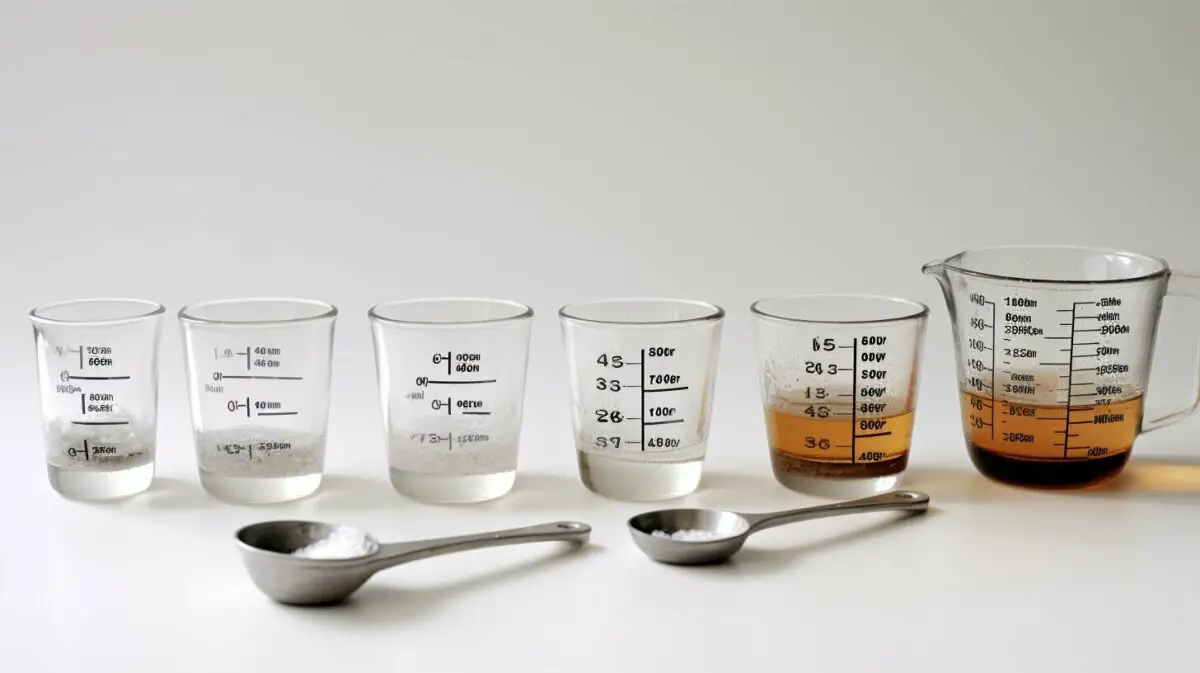
Cups can be found in different containers, and it’s important to know their equivalents. Whether you’re pouring water, milk, oil, wine, beer, or any other liquid, understanding the conversion between cups and various containers will help you achieve precise measurements in your recipes.
Here’s a handy table that shows the cup equivalents in different common containers:
| Container | Equivalent Cups |
|---|---|
| Mixer or Pitcher | 4 cups |
| Jug or Bottle | 2 cups |
| Glass | 1 cup |
Having this knowledge will help you accurately measure liquids when you don’t have a traditional measuring cup on hand. Whether you’re preparing a refreshing drink or following a specific recipe, knowing the cup equivalents in different containers will ensure your culinary creations turn out just right.
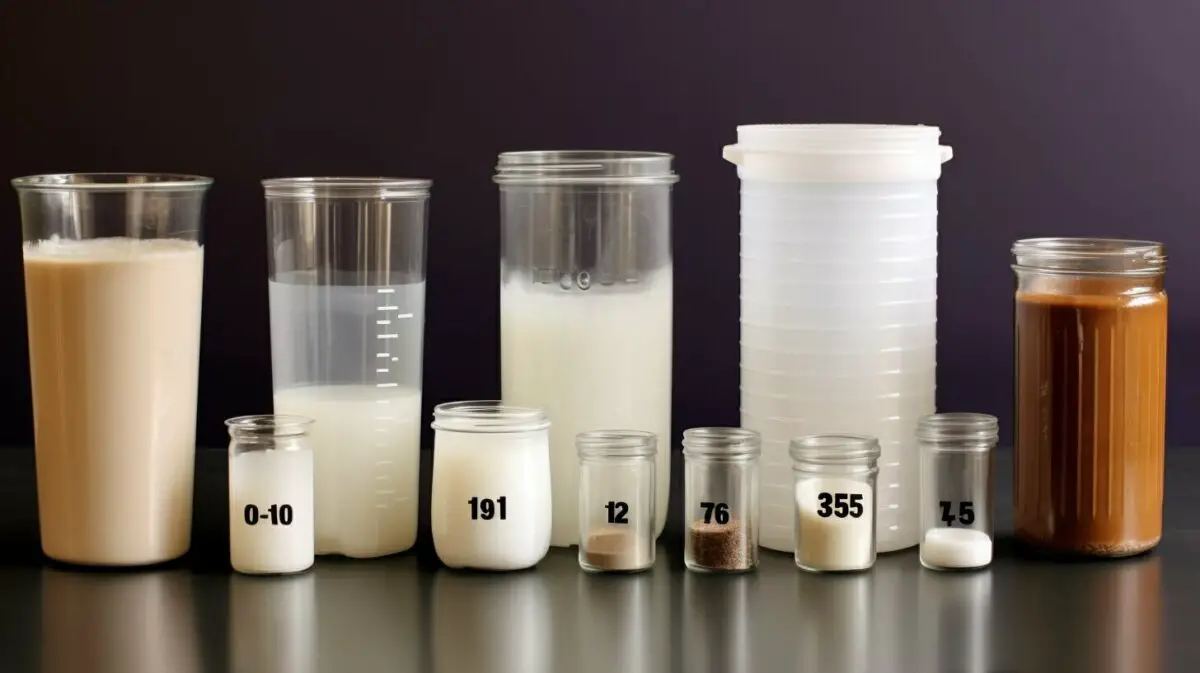
Remember, precise measurements are key to achieving the desired results in your cooking and baking endeavors. So, the next time you’re in the kitchen, confidently measure your ingredients using the appropriate cup equivalents, and watch your dishes come to life!
Scaling Recipes Up and Down
Scaling recipes requires understanding the relationship between cups and gallons. Whether you’re cooking for a crowd or having an intimate dinner, knowing how to adjust measurements is crucial for achieving desired results. Let’s dive into some key conversion ratios and techniques to help you scale your favorite recipes effortlessly.
When increasing or decreasing recipe quantities, it’s essential to maintain the right balance of ingredients. Depending on the original measurements, you’ll need to adjust both cups and gallons accordingly. For example, if you’re doubling a recipe that calls for 1 cup of liquid, you’ll need to use 2 cups, which is equivalent to 1/8 of a gallon. Conversely, if you’re halving a recipe that requires 1 gallon of liquid, you’ll need to use 8 cups instead.
Here’s a handy table summarizing the conversion ratios:
| Original Measurement | Doubled | Halved |
|---|---|---|
| 1 cup | 2 cups (1/8 gallon) | 1/2 cup (1/32 gallon) |
| 1 gallon | 16 cups | 8 cups (1/2 gallon) |
Remember, scaling recipes isn’t just about adjusting the liquid measurements. You’ll also need to consider other ingredients, cooking times, and temperatures. It’s always a good idea to taste and adjust seasoning as you go. With practice, you’ll develop a knack for adapting recipes to suit your needs and preferences.
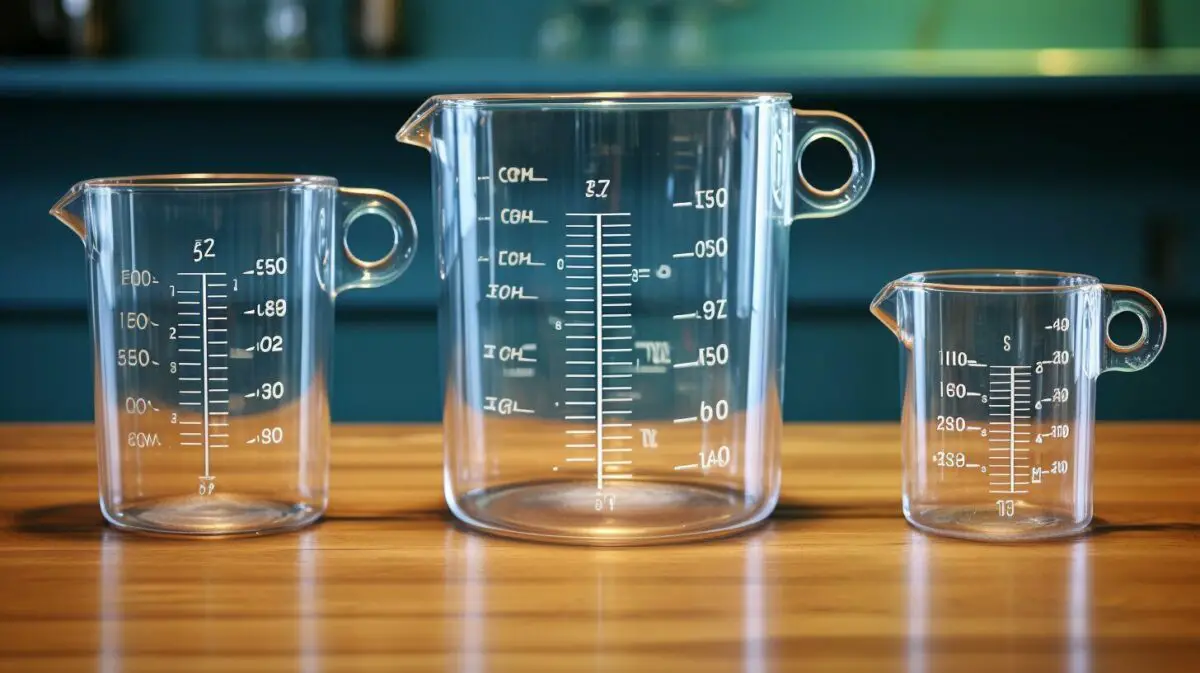
When scaling recipes, it’s important to maintain the same ratio of ingredients. If a recipe calls for 1 cup of flour and 1/2 cup of sugar, doubling the recipe means using 2 cups of flour and 1 cup of sugar. This ensures that the flavors and textures remain balanced.
Using Conversion Factors and Ratios
Conversion factors and ratios are handy when converting cups to gallons or vice versa. These mathematical formulas provide a simple and effective way to accurately convert measurements in the kitchen. Whether you’re scaling a recipe up or down, understanding these conversion tools will ensure precise calculations and consistent cooking results.
When converting from cups to gallons, the conversion factor is 1 gallon equals 16 cups in liquid measurement. This means that if you have a gallon of liquid, you can pour it into 16 standard cups. On the other hand, if you want to convert from gallons to cups, you can multiply the number of gallons by 16 to get the equivalent number of cups.
In the case of dry measurements, the conversion factor is slightly different. One gallon is equal to approximately 18.62 cups in the US dry measurement system. This discrepancy arises because the units used in dry and liquid measurements are different. When converting from cups to gallons in dry measurement, you would divide the number of cups by 18.62. Conversely, to convert from gallons to cups, you would multiply the number of gallons by 18.62.
Conversion Factor Examples
Let’s take a look at some practical examples of using conversion factors and ratios:
- You have a recipe that calls for 2 cups of milk, but you realize you only have a gallon of milk. To convert from cups to gallons, you would divide the number of cups (2) by the conversion factor (16), resulting in 0.125 gallons. Therefore, you would use 0.125 gallons of milk for your recipe.
- If you have a recipe that requires 3 gallons of water, but you only have cups as a measuring tool, you would multiply the number of gallons (3) by the conversion factor (16), resulting in 48 cups. You would then use 48 cups of water for your recipe.
By understanding and utilizing conversion factors and ratios, you can confidently convert between cups and gallons, ensuring accurate measurements and successful culinary creations.
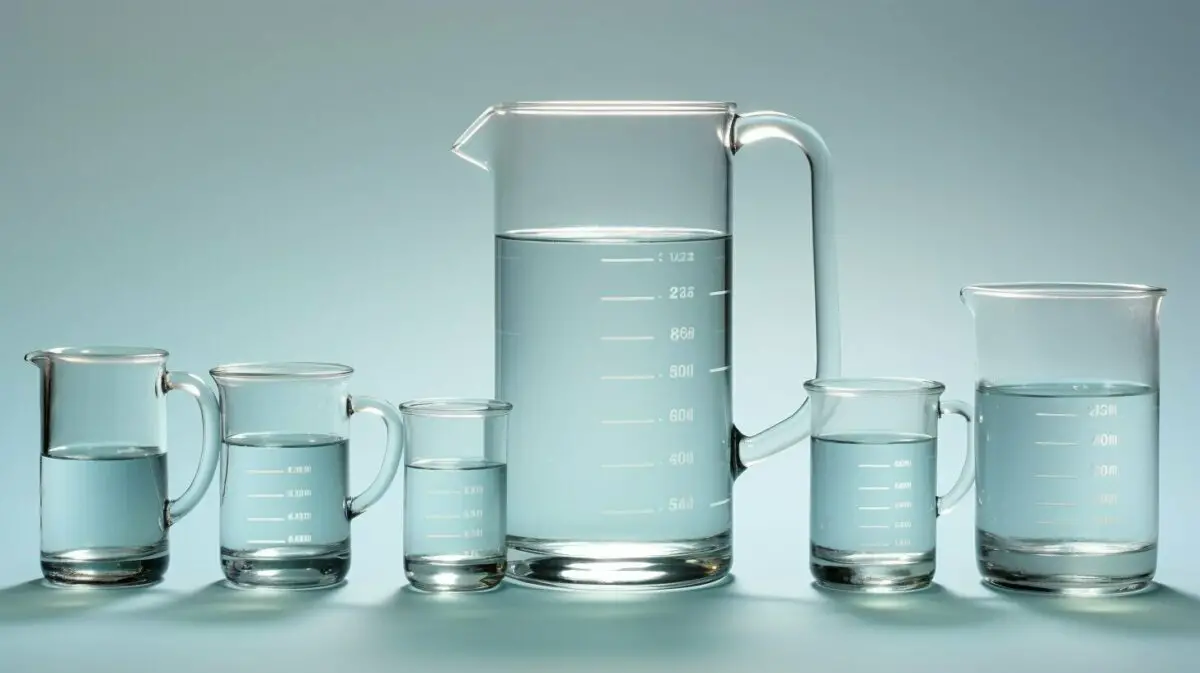
Reference charts make cup-to-gallon conversions a breeze. Having a quick visual guide to determine the equivalent measurements can save time and ensure accuracy in the kitchen. Whether you’re scaling a recipe or working with different containers, these charts provide a handy reference for converting between cups and gallons.
Below is a table showing the conversion ratios for liquid and dry measurements:
| Measurement Type | Conversion Ratio |
|---|---|
| Liquid Measurement | 1 gallon = 16 cups |
| Dry Measurement | 1 gallon = 18.62 cups |
It’s important to note that the conversion ratio may vary depending on the type of measurement system being used. For example, the imperial gallon, commonly used in the United Kingdom, differs slightly from the US gallon. Here is another table illustrating the conversion between the imperial gallon and cups:
| Measurement Type | Conversion Ratio |
|---|---|
| Imperial Liquid Measurement | 1 imperial gallon = 18.6 US cups |
Having these reference charts readily available in your kitchen can simplify your cooking experience and ensure consistent results. Whether you’re following a recipe or creating your own culinary masterpiece, accurate measurements are key, and these charts are here to help.
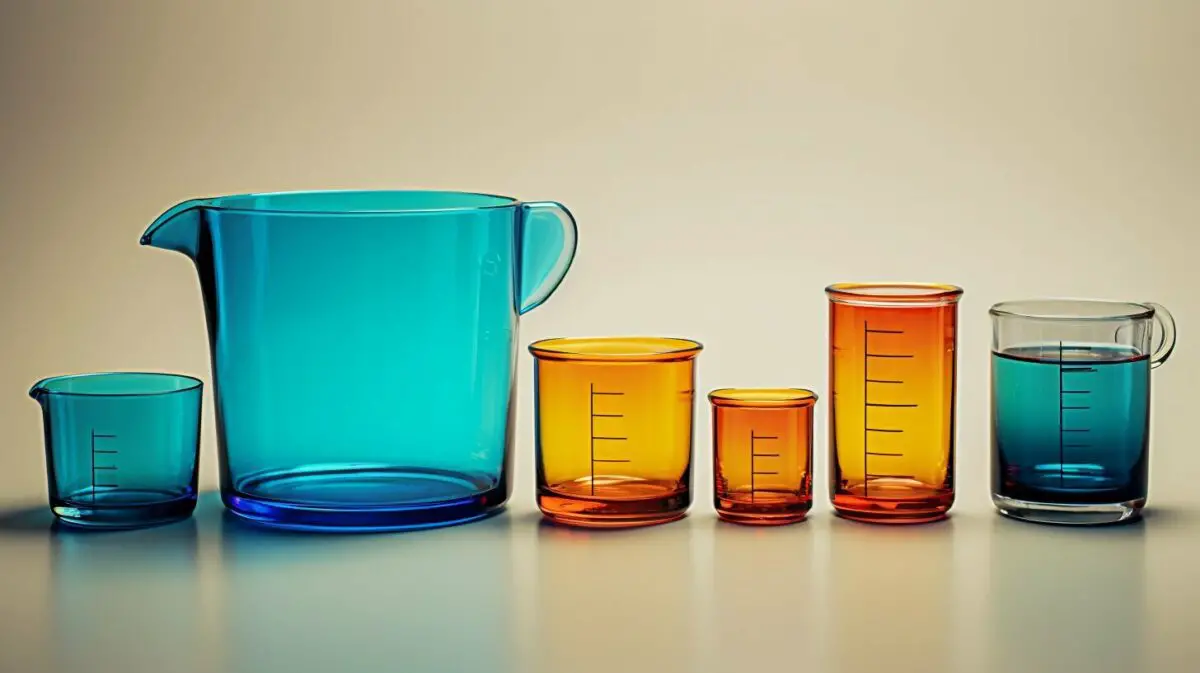
Diving into different measurement systems can enhance your cooking skills. While the United States primarily utilizes the US customary system for measuring cups and gallons, it can be interesting and practical to familiarize yourself with the metric system as well. Understanding how cups and gallons relate to liters and milliliters can expand your culinary knowledge and make it easier to follow international recipes.
In the metric system, a liter is equivalent to 4.2268 cups, which is slightly larger than the US customary cup measurement. This means that a gallon in the metric system is approximately 4.546 liters. When working with metric units, it’s important to note that a milliliter is equal to 0.0042 cups, or 1,000 milliliters equal one liter.
By familiarizing yourself with the metric system, you can easily navigate international recipes that use liters and milliliters instead of cups and gallons. This knowledge allows you to confidently experiment with dishes from different cultures, expanding your culinary repertoire and adding exciting flavors to your meals.
So, whether you’re using the US customary system or exploring the metric system, understanding the relationship between cups, gallons, liters, and milliliters will not only enhance your cooking skills but also open up a world of flavors and culinary possibilities.
Conversion Table: US Customary to Metric
| US Customary Units | Metric Units |
|---|---|
| 1 cup | 236.59 milliliters |
| 1 gallon | 3.785 liters |
| 1 liter | 4.2268 cups |
| 1 milliliter | 0.0042 cups |
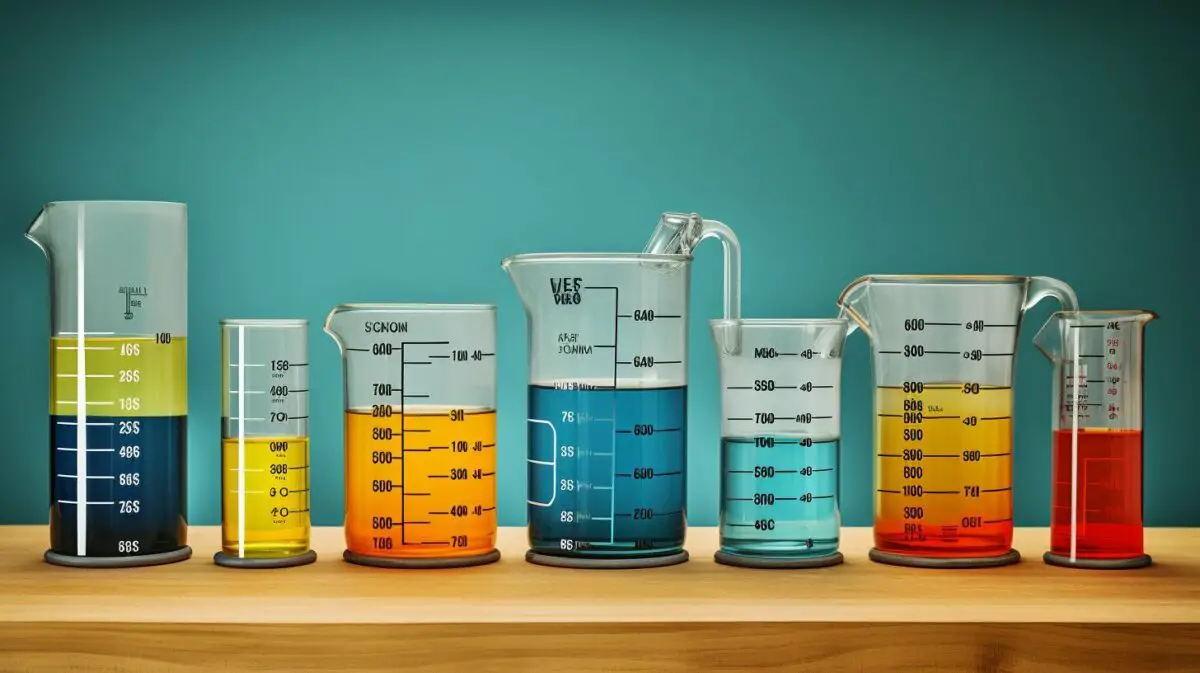
Conclusion
Mastering the cup-to-gallon conversion will elevate your cooking adventures to new heights. Having a solid understanding of measurement conversions is crucial in the kitchen, whether you’re following a recipe or creating your own culinary masterpieces.
When it comes to cups and gallons, there are a few key conversions to keep in mind. In the US customary system, a gallon equals 16 cups in liquid measurement and approximately 18.62 cups in dry measurement. It’s important to note that the imperial gallon, used in the United Kingdom and some other countries, is equivalent to 4.546 metric liters or around 18.6 US cups in dry measurement.
Additionally, knowing the conversions between cups, quarts, pints, tablespoons, and teaspoons can help you navigate recipes with ease. For instance, there are 4 cups in a quart and 2 cups in a pint.
It’s fascinating to learn that the cup as a unit of measurement was standardized by Fannie Farmer in 1896. Farmer’s contribution revolutionized culinary measurements, ensuring consistency in recipes and reliable cooking results.
So, next time you step into the kitchen, armed with your newfound knowledge of cup-to-gallon conversions, confidently measure your ingredients and let your culinary creativity shine!
FAQ
Q: How many cups are in a gallon?
A: In liquid measurement, there are 16 cups in a gallon. However, in dry measurement, there are approximately 18.62 cups in a gallon.
Q: What is the conversion for the imperial gallon?
A: The imperial gallon is equal to 4.546 metric liters or approximately 18.6 US cups in the dry measurement system.
Q: How many cups are in a quart?
A: There are 4 cups in a quart.
Q: How many cups are in a pint?
A: There are 2 cups in a pint.
Q: Who standardized the cup measurement?
A: Fannie Farmer standardized the cup measurement in 1896.
Q: Are there any other common cup conversions?
A: Yes, there are 16 tablespoons in a cup and 48 teaspoons in a cup.
Q: How do I convert cups to fractions?
A: To convert cups to fractions, divide the cup measurement by the desired fraction. For example, a half cup is 8 tablespoons, and a quarter cup is 4 tablespoons.
Q: Can cups be used across different containers?
A: Yes, cups can be used in different containers. Whether it’s a cup of water, a cup of milk, or a cup of oil, the measurement remains the same.
Q: How can I scale recipes up or down?
A: To scale recipes, use the conversion ratios. If you need to double a recipe, multiply all the measurements by 2. If you need to reduce a recipe, divide all the measurements by the desired factor.
Q: Are there reference charts available for easy conversions?
A: Yes, reference charts can be helpful for quick and convenient conversions. These charts provide easy-to-follow measurements for cups, gallons, and other common units.
Q: Should I explore different measurement systems?
A: It can be beneficial to explore different measurement systems, such as the metric system. Understanding how cups and gallons relate to liters and milliliters expands your culinary knowledge and helps you follow international recipes.
Q: Why is knowing cup-to-gallon conversions important?
A: Knowing cup-to-gallon conversions is vital for accurate measurements in the kitchen. Whether you’re following a recipe or experimenting with your own creations, understanding these conversions ensures consistent and delicious results.
Our Friends
- https://www.cozymeal.com/magazine/how-many-cups-in-a-gallon
- https://www.inchcalculator.com/convert/gallon-to-cup/
Related Recipes:
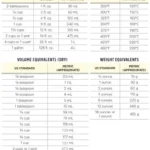 How Many Cups Are in a Liter: Unlocking the Mystery
How Many Cups Are in a Liter: Unlocking the Mystery
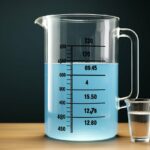 How Many Milliliters in a Gallon? (Perfect Measurement Conversion Guide)
How Many Milliliters in a Gallon? (Perfect Measurement Conversion Guide)
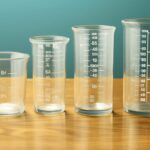 How Many Pints in a Gallon? (Perfect Measurement Conversion Guide)
How Many Pints in a Gallon? (Perfect Measurement Conversion Guide)
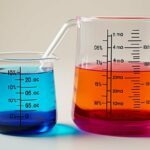 How Many Milliliters in an Ounce? (Perfect Measurement Conversion Guide)
How Many Milliliters in an Ounce? (Perfect Measurement Conversion Guide)
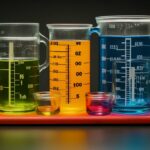 How Many Cups Are in a Quart? (Perfect Measurement Conversion Guide)
How Many Cups Are in a Quart? (Perfect Measurement Conversion Guide)
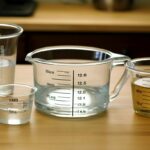 How Many Cups Are in a Liter? (Perfect Measurement Conversion Guide)
How Many Cups Are in a Liter? (Perfect Measurement Conversion Guide)
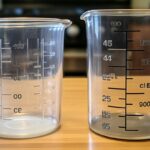 How Many Quarts in a Liter? (Perfect Measurement Conversion Guide)
How Many Quarts in a Liter? (Perfect Measurement Conversion Guide)
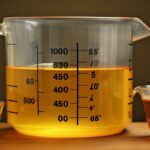 How Many Ounces Are in 750 ml? (Measurement Conversion Guide)
How Many Ounces Are in 750 ml? (Measurement Conversion Guide)


